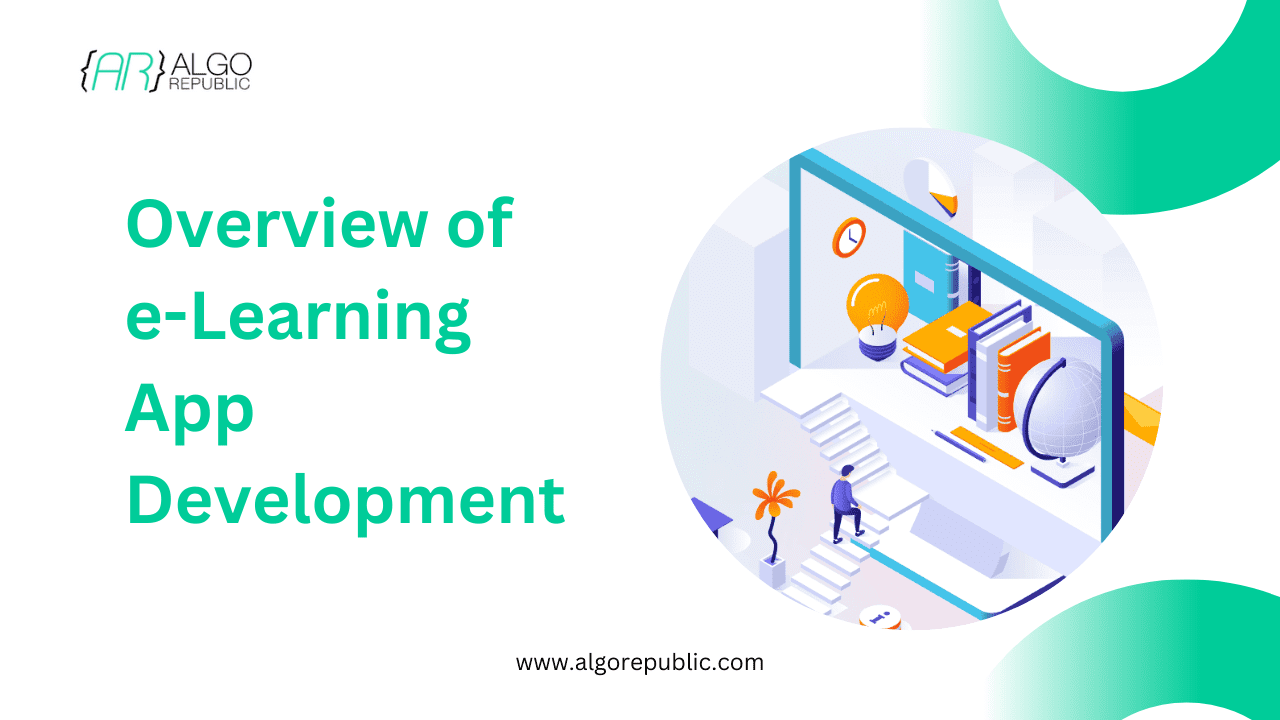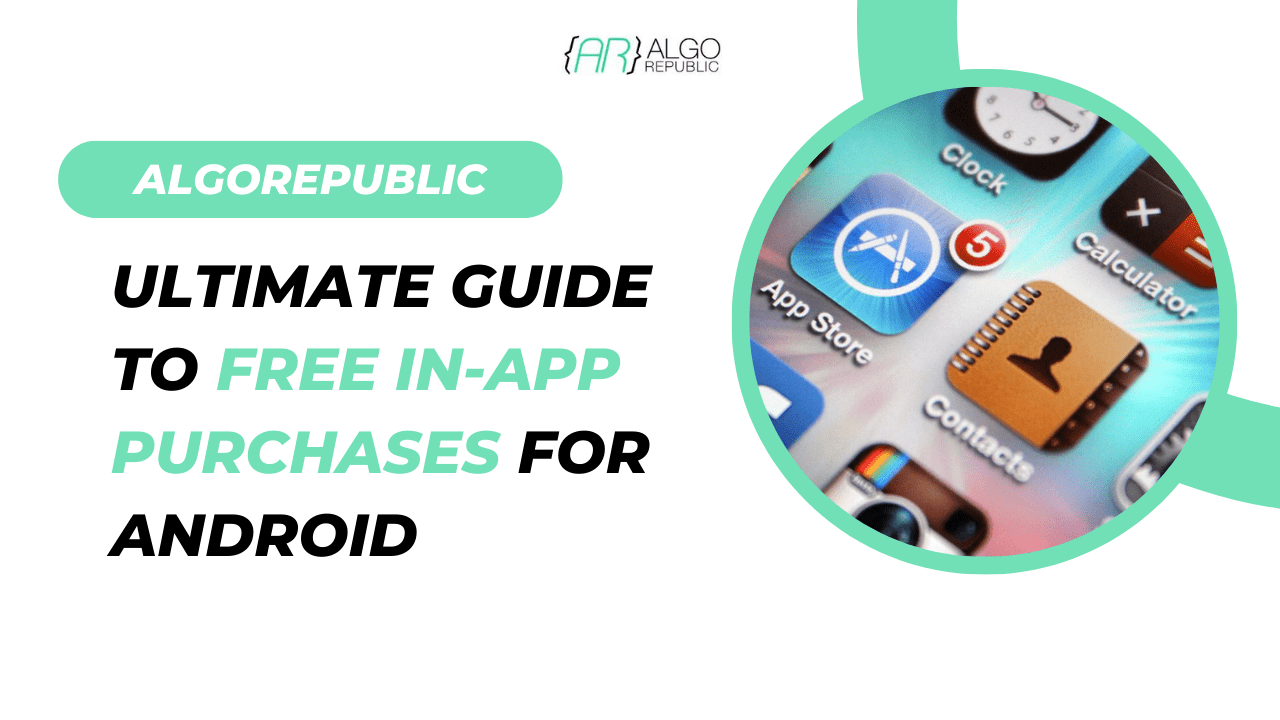Table of Contents
As education continues to evolve with technological advancements, e-learning apps have become an integral part of the educational landscape. These apps provide a flexible, interactive, and engaging way for learners to access knowledge anytime and anywhere. This guide delves into the intricacies of e-learning app development, exploring the various types, features, benefits, trends, and costs associated with creating a successful educational app
Types of e-Learning Apps
E-learning apps can be categorized based on different criteria, including the target audience and the training methods employed.
Based on Audiences:
Student-focused Apps: These apps cater to K-12 students, providing resources like interactive lessons, quizzes, and educational games. They often align with school curriculums and support various subjects, enhancing traditional classroom learning.
Professional Training Apps: Designed for professionals seeking to upgrade their skills or acquire new ones, these apps often include certification programs and advanced courses. They offer specialized training in areas such as IT, finance, marketing, and more.
Higher Education Apps: Targeting college and university students, these apps offer comprehensive courses, lecture recordings, and study materials. They support distance learning and provide access to resources that might not be available on-campus.
Based on Training Methods:
Self-paced Learning Apps: Allow users to learn at their own pace, typically featuring pre-recorded videos, readings, and quizzes. They are ideal for learners who prefer to set their own schedule and learn independently.
Live Streaming Apps: Facilitate real-time interaction between instructors and students through live video sessions. These apps are suitable for virtual classrooms and webinars, promoting real-time feedback and engagement.
Collaborative Learning Apps: Encourage group learning and discussions through forums, chatrooms, and collaborative projects. They foster a sense of community among learners and support peer-to-peer learning.
Gamified Learning Apps: Use game elements like points, badges, and leaderboards to motivate and engage learners. Gamification enhances the learning experience by making it more interactive and fun.
Key Features of e-Learning Apps
User-friendly Interface: An intuitive design that is easy to navigate for all age groups. A well-designed interface improves user engagement and reduces the learning curve.
Content Library: A vast repository of educational materials, including videos, articles, and e-books. A rich content library ensures that learners have access to diverse learning resources.
Interactive Quizzes and Assignments: Tools for testing knowledge and reinforcing learning. Interactive elements keep learners engaged and provide instant feedback.
Progress Tracking: Features that allow users to monitor their progress and set learning goals. Progress tracking helps learners stay motivated and on track with their studies.
Offline Access: Capability to download content for learning without an internet connection. Offline access is crucial for learners in areas with unreliable internet connectivity.
Push Notifications: Reminders and updates to keep learners engaged and informed. Notifications can alert users about upcoming deadlines, new content, and live sessions.
Social Integration: Options to share achievements and collaborate with peers on social media platforms. Social features enhance the learning experience by fostering a sense of community and collaboration.
Use Cases of e-Learning Apps
K-12 Education: Enhancing classroom learning with supplementary digital resources. E-learning apps support blended learning models, combining traditional teaching methods with digital tools.
Corporate Training: Providing employees with on-demand training materials and skill development courses. Companies use e-learning apps to upskill their workforce and ensure continuous professional development.
Language Learning: Offering interactive and immersive tools for learning new languages. Language learning apps often include features like speech recognition, live practice sessions, and cultural lessons.
Test Preparation: Helping students prepare for competitive exams with practice tests and study guides. Test prep apps provide simulated exams, personalized study plans, and detailed performance analytics.
Advantages of e-Learning Application Development
Accessibility and Flexibility
E-learning apps make education accessible to a broader audience, breaking geographical and time barriers. Learners can access materials at their convenience, fitting education into their schedules. This flexibility is especially beneficial for working professionals, parents, and others with busy lifestyles.
Personalized Learning
These apps offer personalized learning experiences, adapting content and recommendations based on individual progress and preferences. This customization enhances engagement and effectiveness. Personalization can include adaptive learning paths, tailored content, and individualized feedback.
Cost-effective
Developing and maintaining e-learning apps can be more cost-effective than traditional educational methods. They reduce the need for physical infrastructure and materials, making education more affordable. E-learning can also reduce costs related to travel, accommodation, and printed materials.
Scalability
E-learning apps can easily scale to accommodate a growing number of users without significant additional costs. This scalability makes them suitable for both small educational institutions and large corporations. Scalability ensures that the app can handle increasing traffic and data as the user base grows.
Key Trends for e-Learning App Development 2024
Artificial Intelligence and Machine Learning
AI and ML are being integrated into e-learning apps to provide personalized learning experiences, adaptive assessments, and intelligent tutoring systems. AI-driven analytics can help educators understand learner behavior and optimize content delivery.
Augmented Reality (AR) and Virtual Reality (VR)
AR and VR technologies are creating immersive learning environments, enhancing engagement and understanding through interactive simulations and virtual field trips. These technologies can make complex subjects more tangible and engaging.
Microlearning
Microlearning, which involves delivering content in small, manageable chunks, is gaining popularity. E-learning apps are increasingly offering bite-sized lessons to cater to learners with limited time. Microlearning supports just-in-time learning, allowing users to quickly acquire specific knowledge or skills.
Gamification
Gamification continues to be a powerful tool in e-learning, with apps incorporating more sophisticated game elements to motivate and engage learners. Game-based learning can increase motivation, participation, and retention.
Blockchain for Certification
Blockchain technology is being used to provide secure and verifiable digital certificates for online courses, enhancing credibility and trust. Blockchain ensures the authenticity and integrity of certificates, making them more reliable for employers and institutions.
Process of Developing an E-Learning App
Developing an e-learning app involves several key steps, from initial planning and research to post-launch support and updates. Here’s a detailed overview of the process:
1. Planning and Research
Define Your Objectives
Identify the primary goals of your e-learning app. Determine what problems it aims to solve and what unique value it will offer to users.
Market Research
Conduct thorough market research to understand the current landscape of e-learning apps. Identify your target audience, study your competitors, and analyze trends and user preferences.
Requirements Gathering
List all the features and functionalities your app will need. This includes both core features (like user registration, course management, and progress tracking) and advanced features (like AI-based recommendations and gamification).
2. Conceptualization and Design
Wireframing
Create wireframes to map out the app’s layout and navigation. Wireframes are basic sketches that outline the app’s structure and user flow.
UI/UX Design
Develop a comprehensive design for the app, focusing on user experience and visual appeal. Ensure that the design is intuitive, engaging, and easy to navigate for users of all ages.
Prototype Development
Build a clickable prototype to visualize how the app will function. Prototyping helps in identifying design issues early and allows stakeholders to provide feedback before development begins.
3. Development
Choose the Right Technology Stack
Select the appropriate technologies for your app, considering factors like scalability, performance, and security. Common technologies for e-learning apps include:
Front-end: React Native, Flutter
Back-end: Node.js, Django, Ruby on Rails
Database: MySQL, PostgreSQL, MongoDB
Set Up the Development Environment
Prepare the development environment by setting up the necessary tools, frameworks, and libraries. Ensure that the environment supports collaborative development if multiple developers are involved.
Front-end Development
Develop the user interface, ensuring it is responsive and user-friendly. Implement features like user registration, course browsing, and interactive quizzes.
Back-end Development
Develop the server-side logic, including database management, user authentication, and API integrations. Ensure that the back-end supports real-time data synchronization and secure data storage.
Integration
Integrate third-party services and tools that enhance the app’s functionality. This might include payment gateways, video streaming services, and analytics tools.
4. Testing
Unit Testing
Test individual components of the app to ensure they function correctly. Unit testing helps identify and fix bugs at an early stage.
Integration Testing
Test the interactions between different components to ensure they work seamlessly together. Integration testing verifies that the app’s modules communicate effectively.
User Acceptance Testing (UAT)
Conduct testing with real users to gather feedback on the app’s usability and performance. UAT helps identify any issues from a user’s perspective.
Bug Fixing
Address any issues identified during testing. Continuously test and refine the app until it is stable and ready for launch.
5. Launch
Pre-launch Marketing
Develop a marketing strategy to create buzz around the app’s launch. Use social media, email campaigns, and other channels to reach your target audience.
App Store Submission
Prepare your app for submission to app stores (Google Play and Apple App Store). Ensure that it meets all the guidelines and requirements for each platform.
Launch the App
Once approved, launch your app to the public. Monitor the initial performance and user feedback closely to address any immediate issues.
6. Post-launch Support and Maintenance
Monitor Performance
Use analytics tools to monitor the app’s performance and user engagement. Track key metrics like downloads, active users, and session duration.
User Feedback
Continuously gather feedback from users to identify areas for improvement. Implement user suggestions and address any reported issues promptly.
Regular Updates
Release regular updates to add new features, enhance security, and fix bugs. Keeping the app updated ensures a better user experience and helps retain users.
Technical Support
Provide ongoing technical support to assist users with any issues they encounter. Responsive support enhances user satisfaction and loyalty.
Some Factors Influencing Costs:
App Complexity: More features and integrations increase costs.
Design Requirements: Custom, high-quality designs are more expensive.
Development Team: Costs vary based on the team’s location and expertise.
Platform: Developing for multiple platforms increases costs.
Reasons to Outsource E-Learning App Development
Cost Saving
Outsourcing can be more cost-effective than hiring an in-house team, particularly for startups and small businesses with limited budgets. It eliminates the need for infrastructure, equipment, and full-time salaries.
Access to Expertise
Outsourcing allows businesses to tap into a global talent pool, accessing experienced developers and designers who specialize in e-learning app development. This expertise can result in a higher-quality product.
Focus on Core Activities
By outsourcing development, businesses can focus on their core activities, such as content creation and marketing, while leaving the technical aspects to experts. This focus can lead to better business outcomes and growth.
Faster Time to Market
Experienced development teams can streamline the development process, reducing the time it takes to bring the app to market. Faster development cycles can give businesses a competitive edge.
Choosing the Perfect App Development Services
Define Your Requirements
Clearly outline your app’s goals, target audience, features, and budget. Having a detailed project brief helps in finding the right development partner. Well-defined requirements ensure that the development process aligns with your vision.
Research and Shortlist Developers
Look for developers with experience in e-learning app development. Check their portfolios, client reviews, and case studies to gauge their expertise and reliability. Consider the developer’s reputation and past performance.
Evaluate Technical Expertise
Ensure the development team is proficient in the technologies and platforms you require. They should have experience with AI, AR/VR, and other relevant trends. Technical expertise is crucial for developing a robust and innovative app.
Communication and Collaboration
Effective communication is crucial for successful outsourcing. Choose a development partner who is responsive and willing to collaborate closely throughout the project. Good communication ensures that your requirements are understood and met.
Cost and Value
While cost is important, focus on the value the development team brings. Investing in quality development services can result in a superior product and long-term success. Consider the return on investment (ROI) rather than just the initial cost.
Support and Maintenance
Post-launch support and maintenance are vital for the app’s success. Ensure the development partner offers ongoing support and updates to keep your app running smoothly. Reliable support can prevent issues and improve user satisfaction.
From our portfolio – a groundbreaking LMS
One of our standout projects is the Hayati Mobile App, a revolutionary application designed to transform the Quran Learning Management System (LMS). Developed using Dart and Flutter, Hayati is available on both iOS and Android platforms, showcasing the power of cutting-edge hybrid app development for a seamless user experience. With Firebase integration, Hayati uses modern tools and techniques to automate Quran learning, effectively digitalizing traditional manual processes into an all-in-one, streamlined platform.
Hayati not only modernizes Quran learning but also exemplifies the potential of LMS apps in delivering tailored, effective, and engaging educational experiences. Its development underscores our commitment to creating innovative solutions that meet the diverse needs of learners and educators alike.
Conclusion
E-learning app development is a rapidly growing field with immense potential to transform education and training. By understanding the types, features, benefits, and trends associated with e-learning apps, businesses can make informed decisions about their development projects. Whether you choose to develop in-house or outsource, selecting the right development partner and leveraging the latest technologies will be key to creating a successful and impactful e-learning app. With the right approach, e-learning apps can provide valuable educational experiences, improve accessibility, and support lifelong learning.
Looking for the best E-learning app for your business or institute? AlgoRepublic is here to help with complete development services from concept to launch. Let’s get started!



